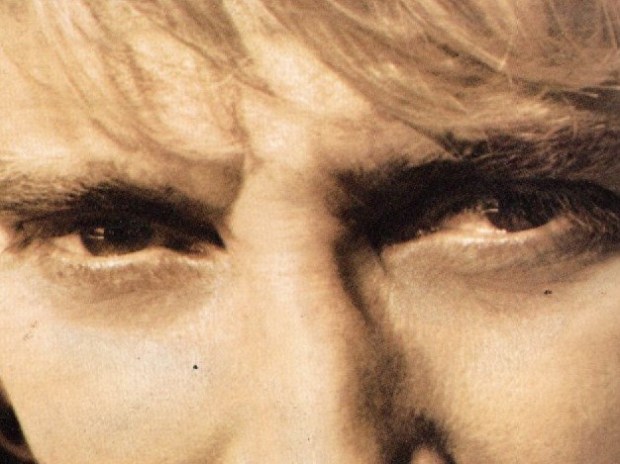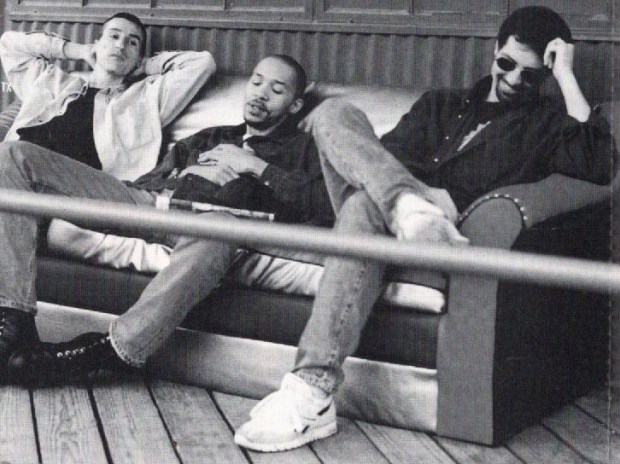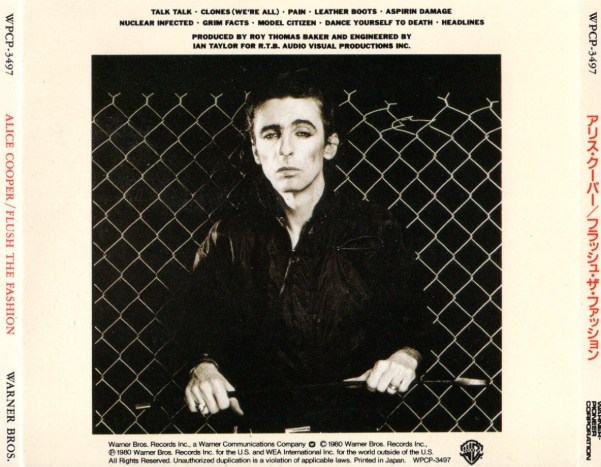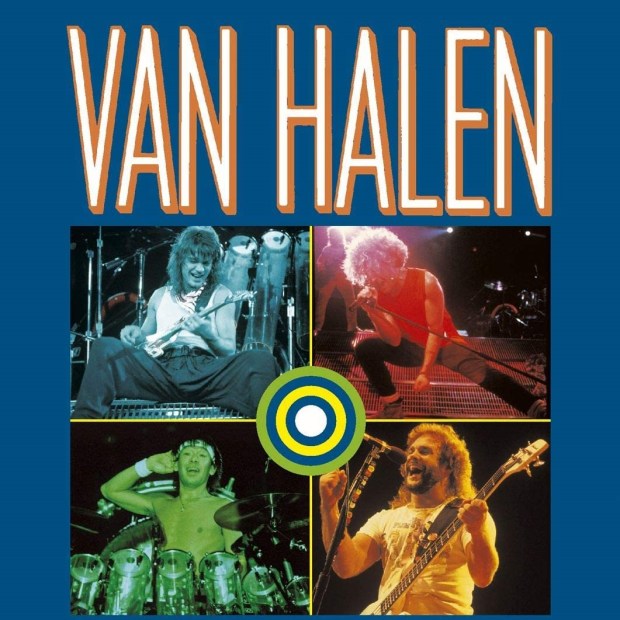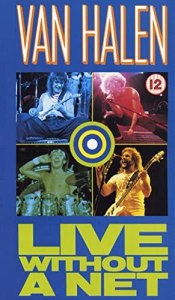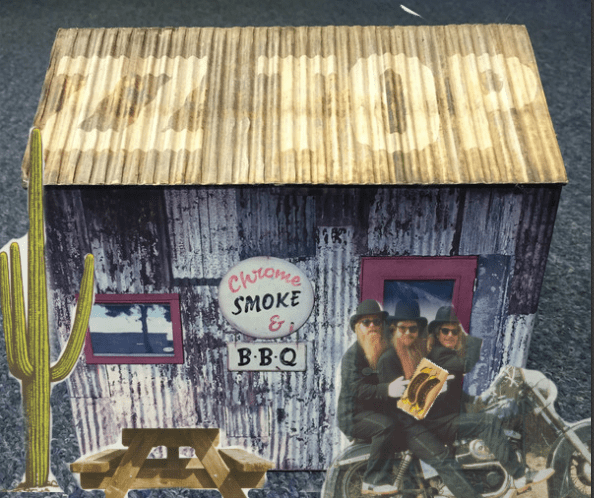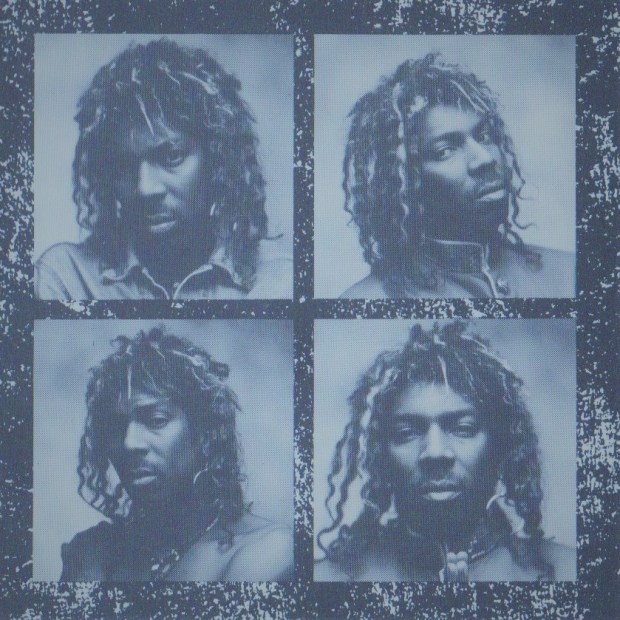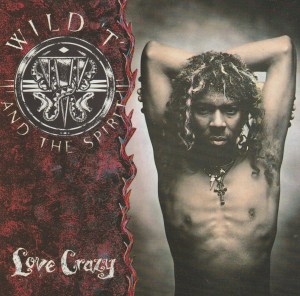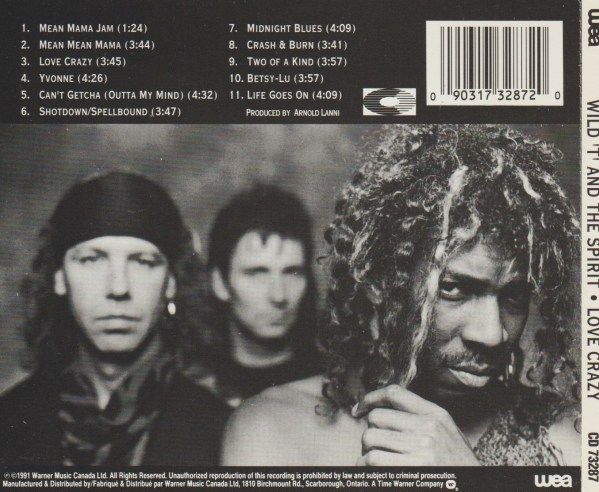 ZZ TOP – Chrome, Smoke & BBQ (2003 Warner limited edition BBQ shack version)
ZZ TOP – Chrome, Smoke & BBQ (2003 Warner limited edition BBQ shack version)
Though it seems an outlandish thought today, there was once a time when if you desired to hear original ZZ Top music, you couldn’t do that on CD. You had to purchase original ZZ Top LPs. In 1987, most of the original ZZ Top albums were issued on CD as part of the ZZ Top Six Pack, which featured remixed percussion to make them sound more like Eliminator and Afterburner. Needless to say this was a very unpopular idea, though it didn’t stop the Six Pack from selling. The original ZZ Top albums were finally given a CD reissue in 2013. Until then, your best bet on compact disc was to buy the 4 CD Chrome, Smoke & BBQ anthology.
Because Chrome, Smoke & BBQ features original mixes and a helping of rarities, it still makes for an enjoyable listen and valuable collectible today. The limited edition version came housed in a box like a little BBQ shack, but both have the same four discs of bluesy, greasy ZZ rock. A well-assembled anthology can make for a great listen even well after its expiry date, and this is one such set.

Disc 1 of Chrome, Smoke & BBQ features three tracks from Billy Gibbons’ first band the Moving Sidewalks. The guitar work is brilliant even in Billy’s youth. These tracks are notably more psychedelic than ZZ Top. The year was 1969, the same year as the first ZZ Top single “Miller’s Farm” / “Salt Lick”. This early version of ZZ Top (credited as “embryonic ZZ Top”) was a transition from Moving Sidewalks and didn’t feature Frank Beard nor Dusty Hill. Organ on a ZZ Top song is an unusual sound, and it’s quite prominent on “Miller’s Farm”. It’s a pretty standard blues with the emphasis on the keys and with one foot solidly in 60s rock. “Salt Lick” has a bit more of the mid-tempo ZZ groove, but the with the organ still part of the whole. Chrome, Smoke & BBQ remains the easiest way to obtain this rare single.
ZZ Top’s First Album takes the spotlight next with three tracks including “Brown Sugar”, the first “real” ZZ Top track. An impactful one it is, and so obviously ZZ Top. It seems by the time the right three guys got together, the ZZ Top sound was born. “Brown Sugar” is so essential to the ZZ Top sound that maybe the box set should have opened with it, chronology be damned! Dusty’s pulse on bass is already present, and Frank’s sheer style adds some much needed character. Then “Just Got Back From Baby’s” has the spare nocturnal blues that is a ZZ signature.
The next three ZZ Top albums – Rio Grande Mud, Tres Hombres and Fandango! are featured much more prominently with seven tracks apiece. This part of the set is deep with essential music. “Francene”, obviously “Francene”, the catchiest song during this part of history, is present and accounted for. (Even in Spanish!) For relentless groove, ZZ Top never nailed one as hard as “Just Got Paid”, slide guitar right in the pocket. “Chevrolet” showed how they could just lay back. For shuffles, “Bar-B-Q” got the spice you need. “Sure Got Cold After the Rain” covers the sad, spare blues that Billy’s guitar can evoke. The music goes on, and on: “La Grange”, “Beer Drinkers & Hell Raisers”, “Heard It on the X”, “Blue Jean Blues”, “Tush”. Though the songs in between are all excellent as well, it’s hard to ignore the hit power of these tracks.
Six tracks from Tejas feature on this set, still more than half the album. The ZZ Top direction was gradually making tentative steps towards modernizing. “It’s Only Love”, a bluesy country pop, sounds like something new. They hadn’t left anything behind though, as told by the menacing “Arrested for Driving While Blind”. It’s a cleaner, more studio-driven sound, as heard on “El Diablo” with its subtle overdubs and dynamics. “Enjoy and Get it On” is a nice sentiment, with the slide all greased up and ready to go. Two of the most interesting of the Tejas tracks are the quiet instrumental “Asleep in the Desert” and the twangy “She’s a Heartbreaker”.
At this point ZZ Top took a break to decompress after years of consecutive touring and recording. The Best of ZZ Top came out during this break, but what was going on behind the scenes was to be far more important down the road. ZZ Top’s image began its final evolution when Gibbons and Hill returned from vacation with matching full length beards. Their next album Degüello allowed the music to evolve as well. Six songs from Degüello represent this period, along with a rare radio spot advertising the album.
ZZ Top’s cover of Sam & Dave’s “I Thank You” is iconic enough that many people probably assume it’s an original. What was original was “Cheap Sunglasses”, a staggering hangover of a track — the new ZZ Top. Same with “Maniac Mechanic”, a track so bizarre that you could mistake it for Zappa. Meanwhile “I’m Bad, I’m Nationwide” has the laid back, cruisin’ ZZ Top vibe that fans always loved. “A Fool For Your Stockings” showed that Gibbons could still play the blues, too.

Another six tracks from El Loco account for the last hits before the MTV generation took hold. “Leila”, a 50s inspired ballad is clearly an experiment albeit a successful one. As is the surf rocker “Tube Snake Boogie”, a track unlike any ZZ Top ever attempted before. Another ballad, “It’s So Hard” is not out of place, with its roots in soul music. “Pearl Necklace” has surf vibes but is most memorable for its dirty double entendre. “Heaven, Hell or Houston” is even weirder than “Maniac Mechanic”. It’s quite clear that ZZ Top were stretching out, while still maintaining a foot in their bluesy, rock and roll roots.
And then came MTV, the music videos, the car, and the girls. The music was laden with sequencers and electronic percussion, but this unlikely combination is the one that really struck oil. Black gold, Texas tea, and platinum records. Eight tracks from Eliminator are included here, almost the whole album minus three. Only “Thug”, “I Need You Tonight” and “Bad Girl” are left behind. So you get all the hits, and then some. “I Got the Six” had to be on here, a dirty but slick little favourite from the day. “Dirty Dog” is a fun also-ran too, but didn’t need to be on a box set.
When ZZ Top found their successful formula, they really ran with it, right into the next album Afterburner. As we know a sequel rarely tops an original, but the album still features eight songs, and this is where Chrome, Smoke & BBQ begins to stumble. By featuring so many songs from this period, the box set is really unfairly weighted. Surely another few tracks could have been included from ZZ Top’s First Album instead of so many from Afterburner and Recycler. “Can’t Stop Rockin'” and “Woke Up With Wood” could have been dropped, but let’s keep “Sleeping Bag”, “Stages”, “Rough Boy”, Delirious, “Velcro Fly”, and “Planet of Women”. Around Afterburner, ZZ Top had taken their music to its most commercial extreme. They decided to reduce, though not remove, technology on the third album of the MTV trilogy Recycler. Notable from this period: “Concrete and Steel”, “My Head’s In Mississippi”, “Give It Up”, “2000 Blues” and “Doubleback”.
ZZ Top switched from Warner to RCA for their next studio album 1994’s Antenna, and nothing from that era onwards is included. There is still some more music on this box set to enjoy. In 1990, ZZ Top recorded a cover of “Reverberation (Doubt)” by Roky Erickson for the tribute album Where the Pyramid Meets the Eye. Gratefully, this ZZ Top rarity is included here. You can note the Recycler-era sequencers, but they compliment the psychedelic track nicely. This is followed by the two “new” songs that ZZ Top recorded for 1992’s Greatest Hits. “The corniest Elvis song ever” is “Viva Las Vegas”, sung by Dusty Hill, and overproduced to the gills. Huge hit of course. “Gun Love” is also included.
Disc 4 ends with six “medium rare” tracks. Some are actually super rare. These include a spanish version of “Francene” with Dusty Hill singing. It sounds like thie audio could be taken from an actual vinyl single. A live version of “Cheap Sunglasses” comes from a 1980 promo-only single, and it smokes. Then there are some dance mixes from 12″ singles, easily the most skippable part of this box set. None of these will be played regularly by you, the listener. Especially not “Viva Las Vegas”.
The booklet included with Chrome, Smoke & BBQ is impressive on its own. It’s packed with music and text, including a track by track commentary by the band. “Seems like all our songs are about dicks and pussies,” says Frank Beard.
Limited edition box sets are fun to get while they last. Chrome, Smoke & BBQ boasts its box shaped like a steel shack, including corrugated roof. (It’s actually great because it doesn’t collect dust!) Include the box, all four CDs are safely housed in individual jewel cases. If you dig inside a little more you’ll find cut-out characters to add to your BBQ shack display. You could scan and print these cut-outs yourself. Enjoy a picnic table, ribs, sausages, cacti, and of course the guys from ZZ Top themselves (on a bike, or disembarked). Also hidden in the box is an animated flip-book. See the video below for a quick demonstration.
As with many box sets, tracklists could use a little tweaking and everybody will have their own ideas for how to fix that. Perhaps instead of dumping all those remixes at the end, they could have been included chronologically so the set doesn’t end on such a…tepid concept as the extended dance remix. The set could certainly use some balancing away from Afterburner and Recycler with more focus on the earlier stuff. The exclusive rarities are adequate and appropriate for a set of this stature. Not too few, not too many. The ZZ Top completist will want this set for them and will still enjoy giving it a complete spin from time to time.
The regular edition will do nicely, but if you can find a complete limited version for a good price, don’t hesitate to snag it.
4/5 stars
 ROD STEWART – “Leave Virginia Alone” (1995 Warner CD single)
ROD STEWART – “Leave Virginia Alone” (1995 Warner CD single)